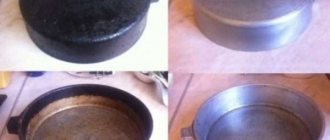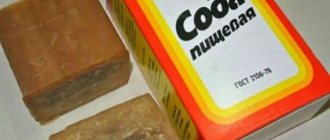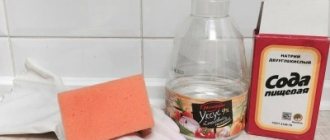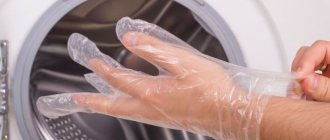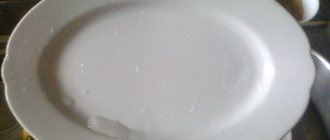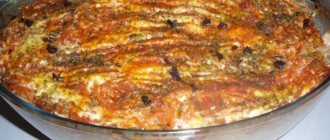Pots and pans are the main arsenal of any housewife who loves and knows how to cook. Their cleaning becomes a guarantee of long-term use of kitchenware. There are many ways to shine the surface of household utensils. This effect is easy to achieve if you use glue and soda to clean the pans.
Many housewives resort to the help of improvised means when they need to remove dirt from the surface of the dishes.
Why are office glue and soda used to clean pans and pots?
Plastic containers with a transparent substance for gluing various materials have been familiar to many since childhood. The capabilities of office glue are not limited to this fastening property.
Dish cleaning glue is used in tandem with many other home remedies. Thus, the result of washing efficiency is increased.
Removing long-term carbon deposits is not a problem, because liquid glass contains alkaline compounds. Stationery glue is the general name for a substance that has several varieties.
When the necessary chemical cleaning agent is not at hand, compositions designed to solve other problems are used.
As for soda, it is difficult to doubt its cleaning properties. It removes significant stains easily when used correctly.
Soda perfectly activates the removal of dirt from the walls of containers.
Attention! Dishes are cleaned using soda ash from a household chemical store. However, you can replace it with a food product available to every housewife.
What are the beneficial properties of soda with office glue?
The perfect cleanliness of kitchen utensils is a myth, even if we are talking about products that have come off the assembly line. Factory oil, which is used in the production process, remains on the walls of such products.
After using kitchen utensils, it becomes necessary to clean them. You can get by with store-bought products, which are offered in a large assortment. However, it should be remembered that they often contain aggressive chemicals. For this reason, it’s worth figuring out how to clean pots and pans using soda and office glue.
Silicate glue and soda ash have been used for cleaning pans for decades.
The benefit of such procedures is the following effect.
- Cleaning old dishes. Cast iron products have often been used in many people's homes for decades. Antique utensils are not just a relic, but a useful thing in the household. Old dishes made of aluminum, cast iron or stainless steel will last a long time if you clean them from carbon deposits with soda and glue three times a year.
- Saving money. It is difficult to call the voiced components an expensive product. Household chemicals in a specialized store cost an order of magnitude higher. In addition, no one can guarantee that a quality product was purchased.
- Minimal health risk. Stationery glue and soda cannot be called absolutely safe products. Moreover, in rare cases they cause an allergic reaction, which cannot be said about store-bought household products.
Cleaning pans with soda and glue is carried out using a hard scraper if we are talking about a cast iron structure.
What else can funds help with?
PVA glue and soda ash are reliable helpers for tourists and summer residents.
With the help of these products, you can easily keep your hiking and outdoor recreation equipment clean. Using a tube of office glue and a handful of soda ash, you can get rid of years of residue and soot at the bottom of the pot.
If tools that are quite suitable for use at the dacha are found at the fire, they can also be cleaned of soot by boiling in a solution with glue and soda. For greater efficiency, it is advisable to add shavings of laundry soap.
During repairs, PVA glue can be added to the putty, and after drying it will acquire extraordinary strength. After filling with this composition, you can be sure that microcracks will not appear on the walls for several years.
Experienced craftsmen know that if you add a little PVA glue to the composition for gluing facing tiles, this will give it strength. You can use office glue to glue carpet and linoleum. It can be added to wallpaper glue.
Soda ash is the sodium salt of carbonic acid and has the appearance of white crystals. It differs from food grade in its stronger alkaline reaction, which makes it possible to cope with very serious contaminants. Soda ash is successfully used in clearing clogged pipes, when washing heavily soiled laundry, in the fight against garden pests, and for disinfection purposes.
Types of glue for cleaning dishes at home
All subtypes of this cleaning product can be called office glue. However, there is a difference between them.
Clerical
In a broader understanding of this term, all its varieties have this name. The difference lies in the goals set for using office glue. This sticky substance is used to glue paper, fabric, and also clean dishes.
Products are produced in various containers depending on the manufacturer.
PVA
The emulsion consists of polyvinyl acetate and an important component for cleaning - acetone. It is necessary to distinguish between its varieties for household needs and as stationery. It is especially indispensable when it is necessary to remove a greasy stain.
PVA is not used in its pure form to clean dishes. Glue goes in addition to soda or laundry soap.
Silicate
The composition of this liquid glass includes quartz sand, soda and silicates of microelements - potassium, sodium. The substance is often used in offices and construction sites. Silicate glue is also useful as a cleaning agent if you want to remove a dense layer of carbon deposits.
Using silicate glue, you can easily clean contaminated kitchen utensils from a dense layer of carbon deposits.
Additional Information! She touches the glue stick. It is best used for gluing paper. It is not suitable for cleaning dishes.
How to wash removable plastic parts
Non-metallic elements of frying pans or pots, as well as the handles of gas stoves, can be washed not only by hand, but also in the dishwasher. The main condition is that the plastic should not be soft. These parts are loaded together with other dishes and the standard mode is turned on. They should not have any labels or stickers on them so as not to damage the washing machine. If there is a function for regulating the water temperature, then it is set to a level of +30-40 degrees.
It is not always possible to quickly wash grease stains and scale from plastic parts using a dishwasher. If this fails, you will have to work hard manually. The same applies to wooden parts that cannot withstand high temperatures. It is better to soak them for 10-15 minutes in a warm soapy solution, and then wipe them with a soft sponge or toothbrush.
For thick plastic, you can use baking soda. It has good abrasive properties and gently dissolves dirt. Greasy areas can be cleaned with a melamine sponge, as well as with regular dishwashing gel.
To tidy up plastic, it is better to avoid boiling water, powdered products, scrapers and brushes, and use soft cleaning liquids, sponges and rags, as well as warm water.
How to clean a frying pan from carbon deposits using solutions with glue and soda
With a large number of methods for such processing, you should choose the most convenient one. The main thing is not to be afraid to experiment. If one recipe does not help, you can safely try another.
The ingredients themselves are relatively safe for humans and pets as long as they are not eaten or inhaled.
Boil with soda ash
To carry out cleaning, select a container that will exceed the size of the dirty dishes. A large basin or pan is filled with water and the object to be processed is placed in it.
100 ml of glue (small bottle) is mixed with 150 g of soda ash. The mixture is added to water to boil for 10 minutes. For minor contamination, treatment time is reduced to 5 minutes.
After turning off the fire, do not remove the dishes until they have cooled completely. Then it is washed and, if necessary, cleaned with a brush.
Soda with glue and soap
If your kitchen utensils are heavily soiled, a simple recipe will help:
- mix 100 ml of glue, ¼ piece of laundry soap and 1 tbsp of soda;
- place dirty utensils in a bucket of water;
- put the container on the fire with the mixture added to it;
- boil the dishes for 2-3 hours;
- rinse kitchen utensils.
Laundry soap kills bacteria and disinfects structures.
Wash the pan with soda and mustard
This method requires simple steps like:
- pouring mustard powder into a plastic bottle (about ⅓ of it);
- adding 2 tbsp to the substance. l baking soda;
- filling the bottle with water until a paste forms;
- shaking the container until the ingredients are completely dissolved;
- treating the contaminated surface with the resulting mixture.
Powdered substances must be mixed until a homogeneous mass is obtained.
Important! The pulp cannot be stored, because it loses its cleansing properties. The announced portion is enough to process two large frying pans.
How to clean with peroxide and soda
This method is suitable if there are only a few dirty utensils accumulated. Recipe:
- mix 4 tbsp. l peroxide with 3 tbsp. l baking soda;
- treat problem areas with the composition;
- let the mixture sit on the surface of the dish for 10 minutes;
- Rinse the product thoroughly with cool water.
If you use peroxide together with soda, the cleaning effect improves significantly.
Cleaning with laundry soap and soda
To make paste you should:
- grate ⅓ of the soap bar on a coarse grater;
- pour 250 ml of hot water into the chips;
- put the mixture in the microwave until the soap is completely dissolved;
- remove the pulp from the household appliance;
- add 2 tbsp to the paste. l soda and 1.5 tbsp. l mustard powder;
This home remedy should only be used on wet dishes.
- add the contents of 4 ampoules of ammonia to the pulp;
- eliminate the foam formed after mixing;
- wait for the cleaning paste to thicken;
- treat contaminated areas;
- wash dishes after 15 minutes.
Dip a stiff brush into the mixture and treat the burnt areas of the product.
We use PVA glue
This type of office glue is used as follows:
- 4 liters of liquid are boiled in a basin;
- ⅓ of a piece of laundry soap is crushed;
- the shavings are poured into boiling water;
- 2 tbsp. l PVA and 1 tbsp. l baking soda is added to the water;
- the dishes are placed in the basin for 30 minutes;
- The product is washed under running water.
Do not use PVA glue for cleaning yourself. It is used in tandem with soda or soap.
How to Clean with a Soda and Vinegar Solution
The ingredients available to any housewife must be used in strict sequence:
- distribute finely ground salt over the bottom of the product;
- pour the powder with two tablespoons. vinegar for half an hour;
- add 4 tbsp. l soda;
- put the mixture on low heat;
- wait for the vinegar and soda to react;
- boil the solution for 10 minutes;
- cool the contents of the utensil.
Vinegar easily copes with rust, grease and carbon deposits.
Housewives can also use the resulting composition instead of dish gel. The main condition is to thoroughly rinse the container after this procedure.
Boiling glass, ceramic, aluminum dishes: which ones can be boiled and which ones cannot
To deal with minor stains , kitchen utensils are boiled by preparing a solution for cleaning dishes with soda.
Glass
Such dishes must be regularly cleaned from dust and yellow deposits . For shine and strength, place it in a large container of cold water and bring to a boil over low heat.
After it boils for 15 minutes, add 2-3 tbsp. l. soda and continue boiling for another thirty minutes.
Carefully remove the dishes, let them cool, then rinse them with cool water and put them in the cupboard.
Ceramics
Ceramics are unpretentious in use, which is why housewives love them so much. Usually, laundry soap and a soft brush are enough , which will remove all dirt in hard-to-reach places. But if you feel that the coating on the ceramic is too persistent, you can boil it off.
Boil the dishes with 1 tbsp. l. soda and washing powder. After boiling, let the ceramics cool and put them on a shelf.
Aluminum
The beauty of aluminum lies in its shine; it's always nice to look at a polished, sparkling pan. It’s easy to achieve this result using boiling - place the dishes in cold water with 2 tbsp. l. wine vinegar and soda and boil for 15 minutes. After that, all you have to do is wipe everything with a fluffy cloth.
Plastic
Many people prefer this type of cookware because it is bright, beautiful, lightweight and easy to clean. You can boil plastic labeled “heat-resistant,” otherwise you risk melting the item . In general, boiling such dishes to remove plaque is not required; it is easily washed off with a sponge and detergent.
The main difficulty in caring for plastic utensils is the problematic elimination of odors that are absorbed into the material during interaction with food. This can be easily fixed by rubbing the utensils with activated carbon or soda. Leave for a couple of hours and rinse with cold water - the odors will disappear.
Dishes that should not be boiled
Earthenware and porcelain are among the most fragile and difficult to care for materials . If you use such cookware, handle it with care and never expose it to high temperatures.
Boiling earthenware and porcelain is strictly prohibited - this will make the dishes fragile and damage the unique painting.
What materials can frying pans be cleaned from using these methods?
There is no large list of restrictions in this case. You can clean almost any utensils this way. The exception is Teflon products. Under the influence of glue and soda, their protective coating is completely destroyed. You should not then hope for its restoration.
Cleaning with glue involves boiling the dishes. This cleaning method is only suitable for durable cookware - cast iron, ceramics, etc.
A limitation is also the undesirability of cleaning utensils with a shiny surface using the described methods. Its shelf life will not change, but it will look worse.
The shine will no longer be restored by any means or polishing.
Attention! Before you start cleaning the utensils, you should unscrew the plastic and wooden elements. If it is impossible to do this, boiling the contaminated product with soda and glue will not work.
Traditional methods of cleaning burnt surfaces
Some housewives believe that a burnt pan cannot be restored to its original appearance, so they decide to throw such utensils in the trash. But you shouldn't make hasty decisions. You can clean a burnt pan yourself, inside and out. Use simple grandma's methods for this:
Soda
Baking soda does a great job of removing various stains. Using baking soda, you can easily clean off burnt-on food debris. The most effective way is to pour water into a saucepan and add a couple of tablespoons of soda. Boil water in a saucepan for 20 minutes. Then wash the pan with added detergent.
Salt
You can also use salt to remove burnt-on food and clean the pan. Do not rub the pan with salt, otherwise scratches may remain. Pour salt into the burnt pan and add a little water. Wait 2 - 3 hours and then wash the pan as usual.
Table vinegar
How to clean a burnt pan with vinegar? Vinegar is a simple and effective method in this situation. Pour acetic acid into the bottom of the pan (be careful, use gloves). After 2 hours, pour out the vinegar and wash the pan with detergents. Acetic acid easily cleans burnt surfaces.
Lemon acid
How to clean a burnt pan at home? A simple and safe way is citric acid. Pour 1 liter of water into a saucepan and add 3 tablespoons of citric acid. Boil citric acid for 15 minutes. Then wash the pan with detergents. Citric acid quickly removes carbon deposits.
Milk serum
Did you know that a burnt pan can be cleaned using regular whey? Since whey does not contain as much acid as vinegar, pour the whey into a saucepan for 12 hours. After 12 hours, wash the pan with a soft sponge and detergents.
We recommend: How to restore shine to gold at home
Tips for cleaning pots and pans
Experts advise following simple rules for caring for dishes.
- Timeliness. There is no need to wait until the kitchen utensils are covered with a layer of soot. Cleaning them later will be difficult, and in some cases impossible.
A solution consisting only of water and glue dissolves fats worse than one that includes all the ingredients. - Right choice. Experts do not give clear instructions to completely abandon store-bought products. They advise choosing the safest and cheapest way to get your dishes in order.
Excluding laundry soap from the solution makes cleaning heavily soiled utensils more difficult. - Maintaining proportions. When trying to prepare an effective cleaning product at home, you often end up going overboard. You should strictly adhere to recipes if they were voiced by professionals.
Not all pots and pans can be cleaned by boiling them in a glue solution.
Boiling rules
Take 5 liters of water into a bucket (preferably not enameled) and place it on low heat. Grate and add soap, stir, add soda and pour in glue. The liquid simmers slowly and all the ingredients dissolve.
Contaminated kitchen utensils - saucepans, frying pans, pots, etc. - are boiled in this composition. A 15-minute procedure removes light stains. To eliminate old ones, you need to boil for a longer time - up to 2 hours.
The dishes are removed from the bucket, the solution is washed off with water or passed over the surfaces with a sponge or scraper to remove the most stubborn soot. If there are plastic or wooden handles or other parts, they must first be removed or unscrewed.
How can you renew the protective coating on dishes after cleaning?
Dishes with such a base are processed as follows:
- heating the oven to 200 °C;
- lubricating the container with vegetable oil on all sides;
- heating the product for half an hour;
- re-applying oil and calcining.
You can add salt to the fat in equal proportions. All utensils should be coated with the mixture and then heated for 30-40 minutes. If you want to renew the protective coating of an aluminum frying pan or pan, you need to pour water into it and boil the liquid for 5 minutes.
Do not rush to throw away old and proven utensils, they can be brought back to life.
Attention! From vegetable extracts, it is best to opt for olive or burdock oil. They have a high density and create a long-term protective layer.
The pan and pot will become clean again if you take care of them regularly. It is easier to remove minor stains than to try to get rid of stains that are ingrained into the metal. Silicate glue, soda ash and laundry soap for cleaning frying pans and other utensils are an ideal combination for cleaning kitchen utensils.
To maintain a ceremonial appearance, carry out scheduled soap-soda-glue cleanings two to three times a year.
Adviсe
You can only clean aluminum cookware that has cooled down. Otherwise, sudden temperature changes will cause the soft metal to deform. After aluminum cookware is cleaned to a shine, it must be dried. Otherwise, indelible drips and stains will remain on the shiny surface.
To avoid damaging soft aluminum, the dishes are rubbed only with special foam sponges or bamboo napkins.
Vinegar will help lighten darkened aluminum kitchen utensils. It is enough to wipe the dark stains with a soft cloth soaked in a vinegar solution (9%) and then rinse the product under running water.
Sour apples restore shine to a darkened product. All you need to do is rub the dishes with an apple cut and they will shine like new again.
